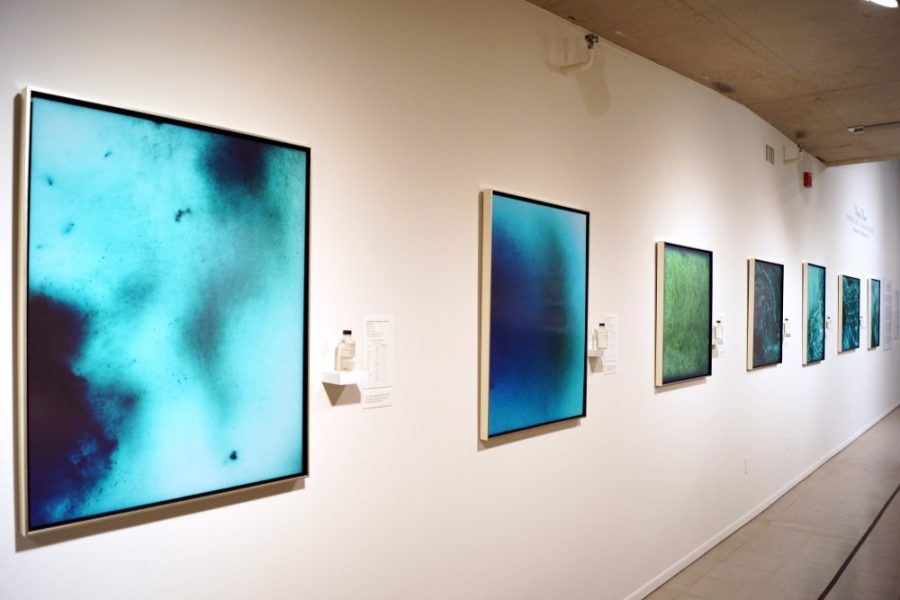The Tucson Museum of Art once again delivered a dazzling artistic innovation to the local art community. This season, the museum introduced some ingenious presentations such as the “Ai Weiwei: Circle of Animals,” “Zodiac Heads: Gold” and “Into the Night” exhibits. The Tucson Museum of Art Board of Trustees now presents Kathleen Velo’s skillful piece “Water Flow: Under the Colorado River.”
Photographer and instructor Velo has built an impressive artistic reputation throughout the course of her life and career. She attended the University of Wisconsin-Madison and Vermont College of Fine Arts, where she received her master’s degree of fine arts.
Growing up in the Midwest, she gained a beautiful impression of the its nature and bountiful waters. Upon arriving in the Southwest, however, Velo gained a new perspective of the scarcer and sediment-impacted waters of the American deserts.
Museum docent Alinda Hakanson expressed her respect for Velo.
“She’s an absolute visionary,” Hakanson said. “Her respect for the Colorado River and it’s overuse is inspirational. Apart from this extraordinary work, she uses her spare time to instruct at Pima College [sic].”
Velo’s work focuses on the grand, deteriorating Colorado River using photograms.
Photograms are used to reflect certain light refractions and locations, creating concise imagery.
Velo traveled along the Colorado River for approximately 1,000 miles to document different images and water qualities.
This exhibit is located just underneath the “Into the Night” exhibit. Located on the bottom ramp of the museum near “Ai WeiWei: Circle of Animals,” “Water Flow” sits in an open space. The fragile photograms are blocked out by a long black line of tape to ensure a space between the works and the audience.
Security guard Delmar Bambrough reinforced this.
“It can get stressful overseeing all of this. I have to sometimes assert the importance of this line,” Bambrough said. “Some people don’t understand the importance of giving these art works their living space.”
Velo provided real water samples from the Colorado River in small vials in addition to the photograms. Each photograph and its respective vial showcase different water qualities. Velo’s goal is to show the distinction of water qualities in different parts of the Colorado River, which makes an enormous impression.
The Rocky Mountains sample, for example, was collected at Rocky Mountain National Park and showed no signs of sediment deposit or altercation. The Arizona’s Glen Canyon Dam image, however, showcased a largely different sample in comparison. Sediment deposits were present in this one indicating a less fortified water quality.
The photographs reinforced the samples—as the Rocky Mountain’s picture exhibited a clear, blue image, the Glen Canyon Dam’s photogram showcased a dirty, green-tinted location.
Environmental activists and art appreciators will find this exhibit entertaining. Velo’s impactful work can make anyone from any background wonder about the Colorado River and the preserving it.
For more information on the exhibit, visit the Tucson Museum of Art website.
Follow Sammy Cherukuri on Twitter.









